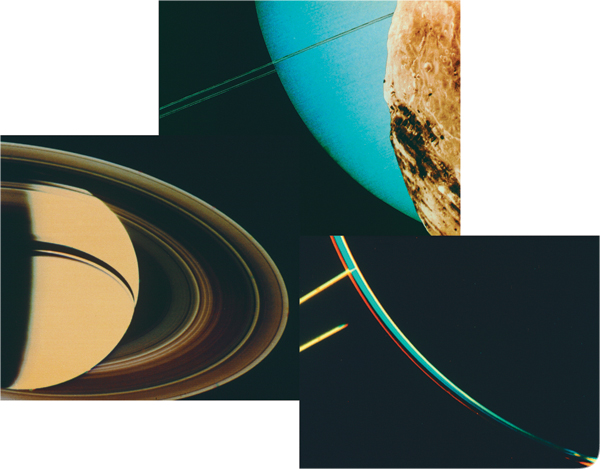Below is the online edition of In the Beginning: Compelling Evidence for Creation and the Flood,
by Dr. Walt Brown. Copyright © Center for Scientific Creation. All rights reserved.
Click here to order the hardbound 8th edition (2008) and other materials.
47. Planetary Rings
Planetary rings have long been associated with claims that planets evolved. Supposedly, after planets formed from a swirling dust cloud, rings remained, as seen around the giant planets: Saturn, Uranus, Jupiter, and Neptune.a [See Figure 25.] Therefore, some believe that because we see rings, planets must have evolved.b
Actually, planetary rings do not relate to a planet’s origin. They form when a planet’s gravity captures material from a passing asteroid or material expelled from a nearby moon—by a volcano, a geyser, tidal effects, or the impact of a comet or meteorite.c Debris that escapes a moon or asteroid because of its weak gravity and the giant planet’s gigantic gravity then orbits that planet as a ring. Rings are young, because impacts rapidly scatter them. They they will be gone in less than 10,000 years.dBecause a planet’s gravity pulls escaped particles away from its moons, particles orbiting a planet could never form moons—as evolutionists assert.

Figure 25: Planetary Rings. The rings of Saturn, Uranus, and Jupiter (left to right) are forming today and steadily breaking up. Rings are not composed of debris remaining after planets evolved.